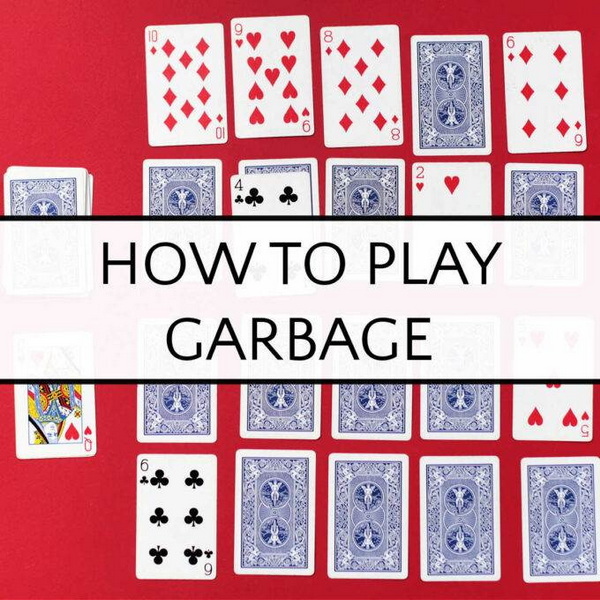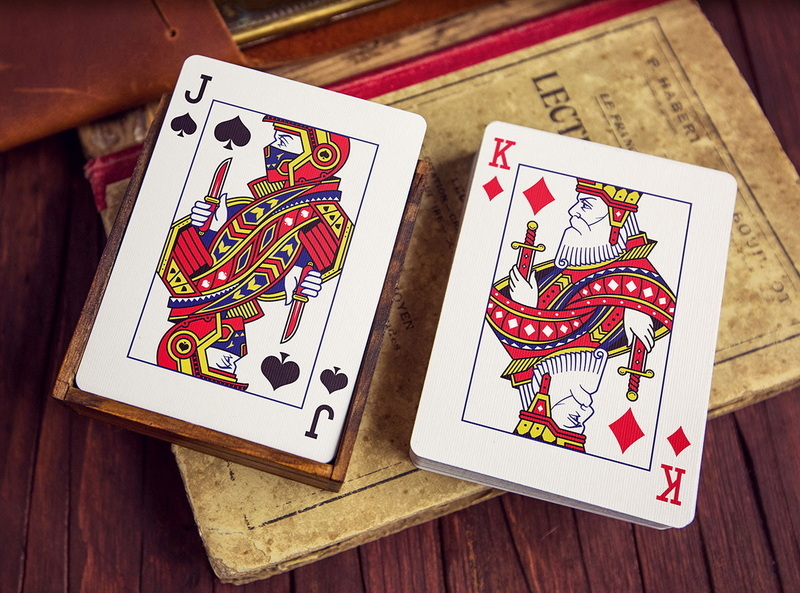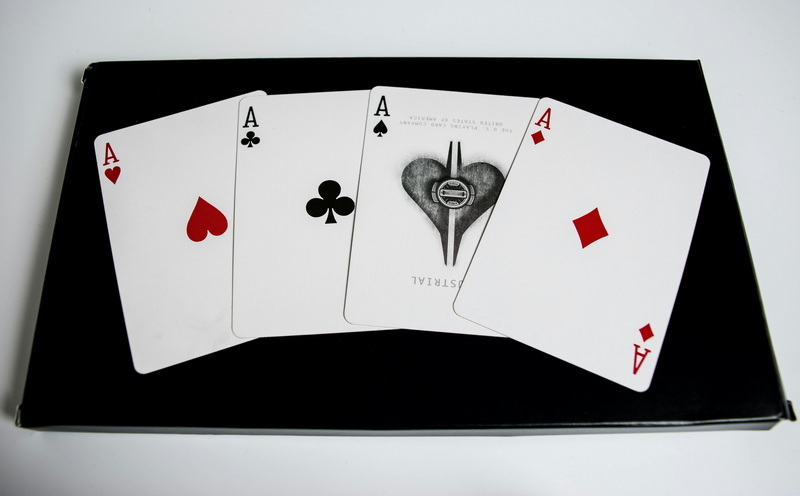Content Menu
● Setting Up the Game
>> Dealing the Cards
● Gameplay Basics
>> Starting the Game
>> Playing a Card
>> Flipping and Replacing
>> Subsequent Turns
● Winning a Round
● Advanced Rules and Strategies
>> Wild Cards
>> Strategic Discarding
>> Focusing on One Row
>> Observing Opponents
● Multiple Rounds and Scoring
>> Scoring System
● Variations and House Rules
>> Joker's Wild
>> Peek-a-Boo
>> Speed Garbage
>> Team Play
● Tips for New Players
● Conclusion
● Frequently Asked Questions
>> 1. How many players can participate in a game of Garbage?
>> 2. What happens if the draw pile runs out during gameplay?
>> 3. Can players look at their face-down cards before they're flipped?
>> 4. Is there a maximum number of rounds in a game of Garbage?
>> 5. How can I make the game more challenging for experienced players?
● Citations:
Garbage, also known as Trash, is an engaging and entertaining card game that combines elements of luck and strategy. This game is perfect for players of all ages and can be enjoyed by two or more participants. In this comprehensive guide, we'll explore the rules, gameplay, strategies, and variations of the Garbage card game.

Setting Up the Game
To begin playing Garbage, you'll need the following:
- A standard 52-card deck (for 2-3 players)
- Additional decks for 4 or more players
- A flat playing surface
- 2 or more enthusiastic players
Dealing the Cards
1. Shuffle the deck thoroughly to ensure randomness.
2. The dealer distributes 10 cards to each player, face down.
3. Players arrange their cards in two rows: a top row of 4 cards and a bottom row of 6 cards.
4. The remaining cards form the draw pile, placed in the center of the playing area.
5. A discard pile, also known as the "garbage" pile, will be formed next to the draw pile during gameplay.
Gameplay Basics
The objective of Garbage is to be the first player to arrange all their cards in sequential order from Ace (representing 1) to 10. Here's how the game unfolds:
Starting the Game
1. The player to the left of the dealer goes first.
2. On their turn, a player draws the top card from the draw pile.
Playing a Card
When a player draws a card, they have several options:
1. If the card is numbered (Ace to 10), they can place it face-up in the corresponding position in their layout. For example, a 5 would be placed in the fifth position.
2. If the card is a face card (Jack, Queen, or King), it's considered "garbage" and must be discarded.
3. If the drawn card can't be played, it must be discarded, and the player's turn ends.
Flipping and Replacing
1. When a card is placed in a position, the face-down card in that spot is flipped over.
2. If the flipped card can be played in another open position, the player does so and continues this process.
3. If the flipped card can't be played, it's discarded, and the player's turn ends.
Subsequent Turns
On turns after the first round, players have two options to start their turn:
1. Draw from the draw pile
2. Take the top card from the discard pile
The player then proceeds with their turn as described above.

Winning a Round
A player wins a round when they successfully arrange all their cards in sequence from Ace to 10. When this happens:
1. The winning player calls out "Garbage!" or "Trash!"
2. All other players get one final turn to try and complete their sequences.
3. If multiple players complete their sequences, it results in a tie for that round.
Advanced Rules and Strategies
As players become more familiar with the game, they can incorporate these advanced rules and strategies:
Wild Cards
Some variations of Garbage include wild cards:
- Kings are often used as wild cards, allowing players to place them in any position.
- Some groups use Jacks or Jokers as wild cards instead.
Strategic Discarding
Players should be mindful of which cards they discard. Discarding cards that opponents might need can hinder their progress and give you an advantage.
Focusing on One Row
A effective strategy is to focus on completing one row's sequence before moving on to the other. This approach can lead to a smoother progression and potentially faster wins.
Observing Opponents
Pay attention to your opponents' layouts and strategies. This information can help you make better decisions about which cards to keep or discard.
Multiple Rounds and Scoring
For a more extended game experience, players can engage in multiple rounds:
1. After each round, the winner reduces their card count by one for the next round.
2. For example, if a player wins the first round, they'll only need to arrange cards from Ace to 9 in the second round.
3. Non-winning players continue with 10 cards.
4. The game continues with subsequent rounds, with winning players further reducing their card count.
5. The ultimate winner is the first player to successfully arrange just one card (Ace) in a round.
Scoring System
For competitive play, a scoring system can be implemented:
- Award points based on the number of cards remaining in opponents' layouts at the end of each round.
- The player with the lowest total score after a predetermined number of rounds or when a player reaches zero cards wins the game.
Variations and House Rules
Garbage is a flexible game that allows for various house rules and variations. Here are some popular modifications:
Joker's Wild
Include Jokers in the deck as additional wild cards, adding an extra element of strategy to the game.
Peek-a-Boo
Allow players to peek at one of their face-down cards at the beginning of the game, giving them a slight advantage in planning their strategy.
Speed Garbage
Implement a time limit for each turn to add excitement and encourage quick decision-making.
Team Play
For larger groups, form teams of two or three players, working together to complete a shared layout.
Tips for New Players
If you're new to Garbage, keep these tips in mind:
1. Start by focusing on completing your top row, as it's easier to manage.
2. Don't be afraid to discard cards that you can't immediately use – holding onto them might slow you down.
3. Pay attention to the cards your opponents discard, as this information can help you plan your strategy.
4. Remember that luck plays a significant role in the game, so don't get discouraged if you have a few bad rounds.
Conclusion
Garbage is an entertaining and accessible card game that offers a perfect blend of luck and strategy. Its simple rules make it easy to learn, while the element of chance keeps each game exciting and unpredictable. Whether you're looking for a fun family activity or a casual game night with friends, Garbage provides hours of enjoyment for players of all ages and skill levels.
As you become more familiar with the game, you'll develop your own strategies and may even create house rules to suit your group's preferences. The flexibility of Garbage allows for endless variations and adaptations, ensuring that the game remains fresh and engaging no matter how many times you play.
So gather your friends or family, shuffle the deck, and dive into the world of Garbage – a card game that's anything but trash!

Frequently Asked Questions
Here are some common questions about the Garbage card game:
1. How many players can participate in a game of Garbage?
Garbage can be played with two or more players. For 2-3 players, a standard 52-card deck is sufficient. For 4 or more players, additional decks may be needed to ensure there are enough cards for everyone.
2. What happens if the draw pile runs out during gameplay?
If the draw pile is exhausted, shuffle the discard pile (except for the top card) to create a new draw pile. This allows the game to continue without interruption.
3. Can players look at their face-down cards before they're flipped?
No, players are not allowed to look at their face-down cards until they're flipped during gameplay. This element of surprise adds to the excitement and challenge of the game.
4. Is there a maximum number of rounds in a game of Garbage?
There's no set maximum number of rounds. Players can decide beforehand how many rounds they want to play or continue until someone wins by arranging just one card (Ace) in the final round.
5. How can I make the game more challenging for experienced players?
To increase the difficulty for seasoned players, you can introduce additional rules such as:
- Limiting the time for each turn
- Removing wild cards
- Requiring players to arrange cards in descending order (10 to Ace) instead of ascending order
- Implementing a more complex scoring system
Citations:
[1] https://gathertogethergames.com/garbage
[2] https://www.gamesforyoungminds.com/blog/2019/6/16/garbage-a-perfect-pre-school-card-game
[3] https://www.meredithplays.com/playing-garbage-card-game-simple-steps/
[4] https://gameonfamily.com/garbage/
[5] https://www.whatdowedoallday.com/garbage-card-game/
[6] https://thebluebrainteacher.com/how-to-play-the-card-game-garbage/19477/
[7] https://www.youtube.com/watch?v=tKWvR-43Ukc
































